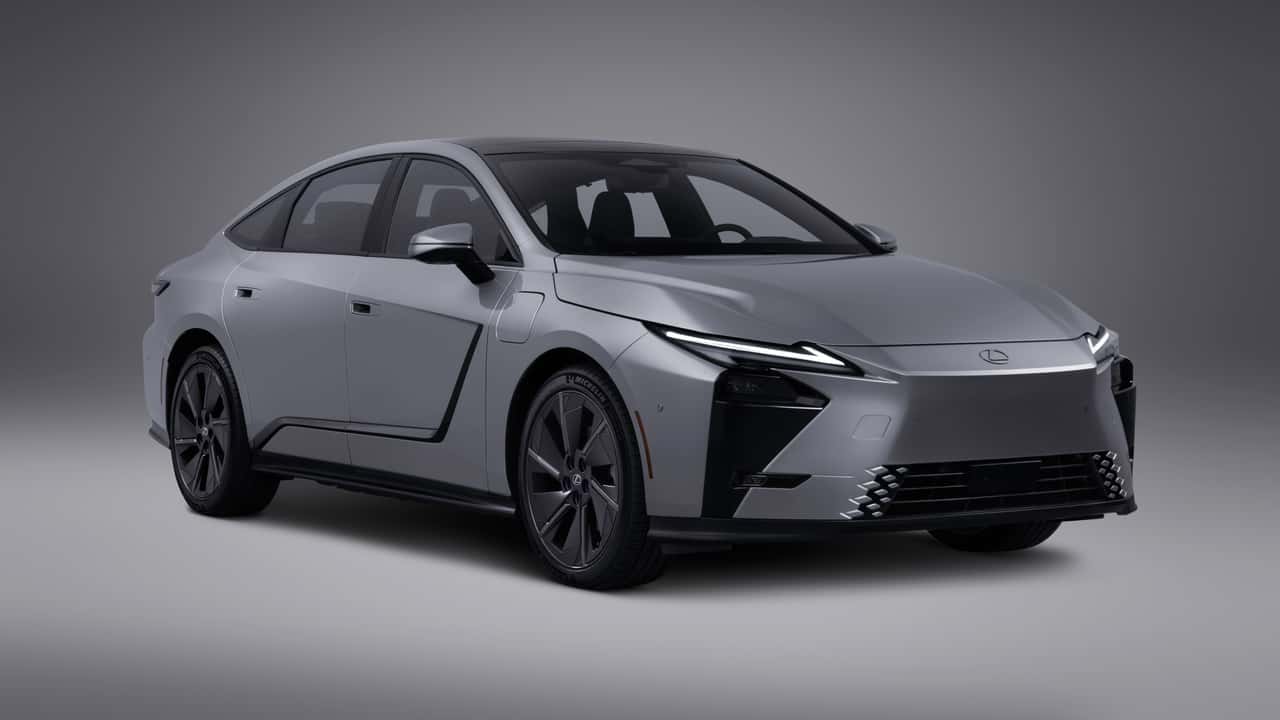Lexus Unveils the 2026 ES with Hybrid and Electric Variants
Despite receiving a couple of minor updates, the previous ES model was showing its age. Since the seventh-generation version launched in 2018, a significant overhaul was overdue. Lexus has now delivered, revealing the entirely revamped 2026 ES at Auto Shanghai this week, featuring substantial enhancements both aesthetically and technologically.
The exterior maintains familiar sharp lines, drawing inspiration from the LF-ZL concept presented approximately eighteen months ago. While the production model adopts a slightly more restrained look, it still marks a significant shift from its predecessor. Notably, the large grille has been eliminated, though the pronounced, sculpted silhouette with expansive gloss-black accents along the doors may divide opinions.
A newly added charging port on the front fender indicates the introduction of a purely electric version, which will be available alongside the traditional hybrid model. At the rear, the taillights have been redesigned: the lower "L"-shaped sections now incorporate the turn signals, reverse lights are positioned beneath them, and a fog light is placed on one side. The iconic badge has been swapped for prominent Lexus lettering across the top of the light bar.
Inside, the transformation is equally striking. The interior embraces a minimalist approach, replacing conventional buttons with a cleaner interface. The dashboard is dominated by a 12.3-inch digital instrument cluster and a 14-inch infotainment display. Certain trims even offer an additional screen for passengers, likely as an optional feature depending on the region.
The steering wheel now showcases embossed "Lexus" branding instead of the traditional emblem, and the previous gear shift has been substituted with a sleeker selector. A few touch-sensitive shortcut buttons remain below the infotainment system, alongside a classic volume knob for user convenience. Additionally, a panoramic glass roof can be dimmed with the touch of a button. Rear passengers can enjoy massaging seats and a dedicated climate control interface integrated into the center armrest.
The traditional luxurious ambiance of the former ES is replaced with new elements, including an exotic bamboo-colored interior option. Moreover, the instrument panel employs 3D printing techniques to replicate the look of bamboo, while the sophisticated lighting embedded in the door panels is a first for Lexus's premium lineup.
The redesigned ES is noticeably larger, extending by 6.5 inches (165 mm) to reach an overall length of 202.3 inches (5,140 mm). Approximately half of this increase is due to an extended wheelbase, now 116.1 inches (2,950 mm) long, up by 3.1 inches (80 mm). The vehicle is also 2.1 inches (55 mm) wider, measuring 75.6 inches (1,920 mm). Despite its increased size, the ES does not replace the LS, as Lexus confirms it will continue to offer the flagship sedan.
Height-wise, the hybrid variant stands 4.3 inches (110 mm) taller than its predecessor at 61.2 inches (1,555 mm), while the electric model adds an additional 0.2 inches (5 mm). The weight ranges from 3,935 pounds (1,785 kg) for the front-wheel-drive ES 300h to 5,037 pounds (2,285 kg) for the all-wheel-drive electric ES 500e.
Powertrain Options
Lexus presents the new ES with two hybrid configurations featuring 2.0-liter and 2.5-liter engines. However, the smaller engine is exclusively front-wheel drive and will not be available in the United States. The US market will receive the ES 350h, offering both front-wheel and all-wheel drive options. Power output ranges from 194 horsepower for the 2.0-liter hybrid to 244 horsepower with the larger engine. Acceleration from 0 to 62 mph (100 km/h) varies between 9.4 seconds for the least powerful variant and 7.8 seconds for the most potent.
Electric Models
The fully electric ES is available as the front-wheel-drive ES 350e and the all-wheel-drive ES 500e. The more affordable EV version delivers 221 horsepower, achieving 0 to 62 mph in 8.9 seconds and boasting a maximum range of 426 miles (685 kilometers) under the optimistic CLTC cycle. However, Lexus estimates the US version will have a range of approximately 300 miles (483 kilometers) per charge. The dual-motor ES 500e enhances performance with 338 horsepower and reduces the sprint time to 5.9 seconds, though its range slightly decreases to 379 miles (610 kilometers) per CLTC due to increased weight.
Advanced Features
The new ES includes all-wheel steering, allowing the rear wheels to turn up to four degrees opposite the front wheels at lower speeds and in the same direction at higher speeds. Additionally, a multi-link rear suspension system has been implemented to enhance ride comfort. Lexus asserts that body rigidity has been improved through the latest Toyota TNGA GA-K platform. Wheel sizes range from 18 to 21 inches, with larger wheels potentially affecting the electric models' range. The stated range figures are based on vehicles equipped with 19-inch alloys.
Although the global unveiling has taken place, the next-generation Lexus ES is not expected to be available for purchase until mid-2026.
